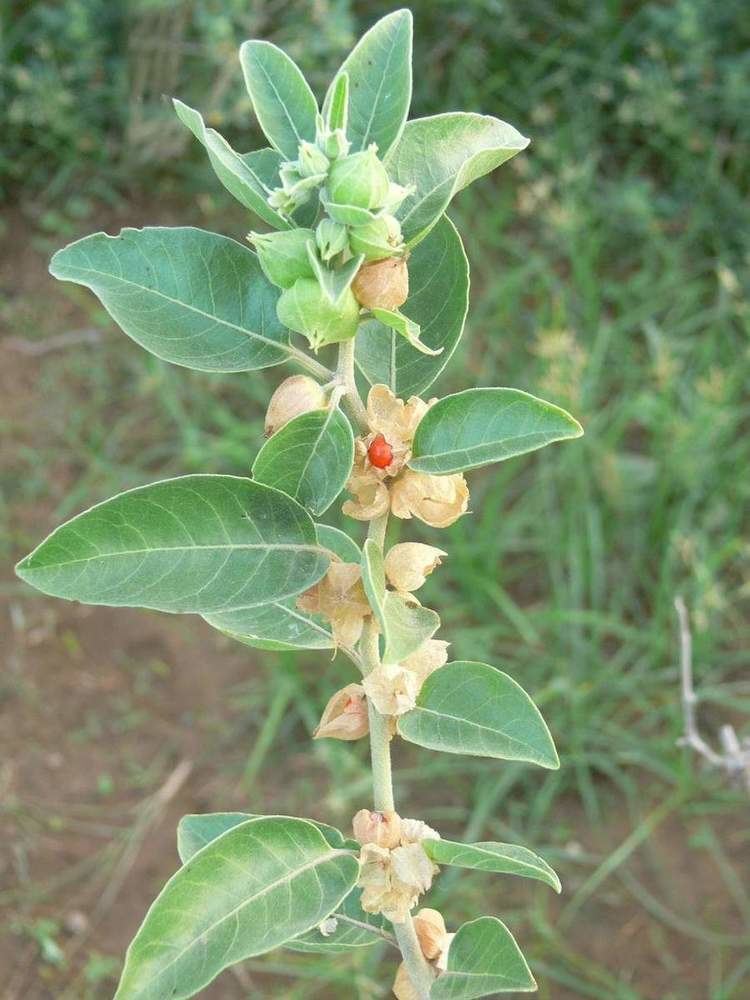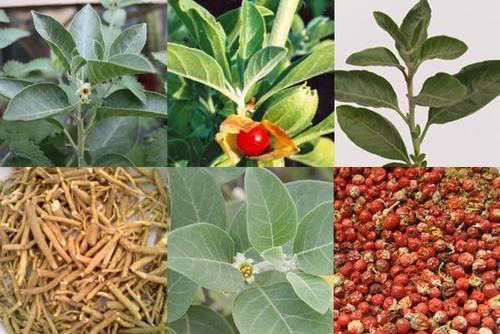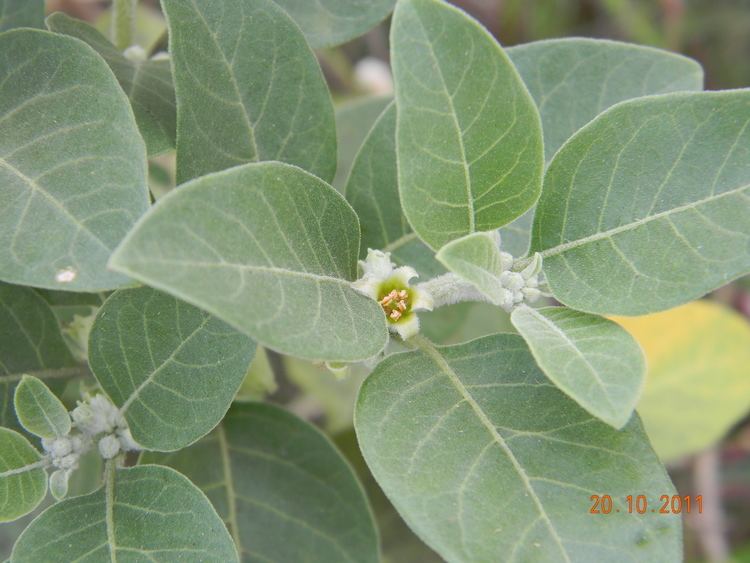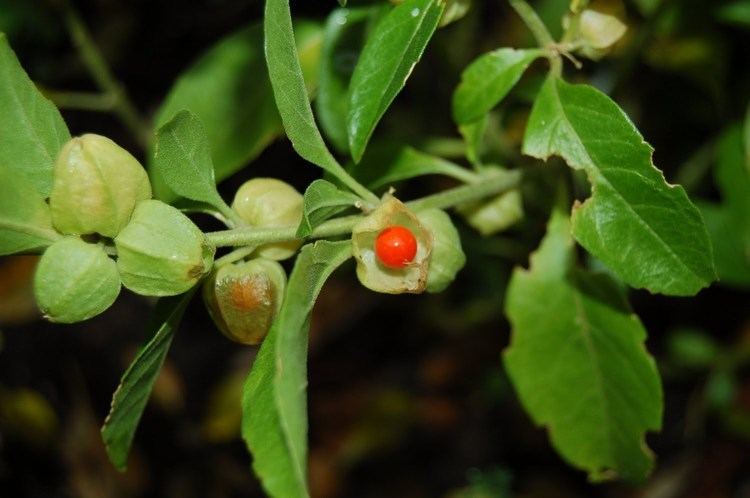Higher classification Withania | Genus Withania Rank Species | |
 | ||
Similar Shatavari, Waterhyssop, Rhodiola rosea, Indian gooseberry, Bindii | ||
Ashwagandha or withania somnifera medicinal plant
Withania somnifera, known commonly as ashwagandha, Indian ginseng, poison gooseberry, or winter cherry, is a plant in the Solanaceae or nightshade family. Several other species in the genus Withania are morphologically similar. It is used as a herb in Ayurvedic medicine.
Contents
- Ashwagandha or withania somnifera medicinal plant
- Withania somnifera
- Description
- Etymology
- Cultivation
- Pathology
- Culinary use
- Biochemistry
- Traditional medicinal uses
- References

Withania somnifera
Description

This species is a short, tender perennial shrub growing 35–75 cm (14–30 in) tall. Tomentose branches extend radially from a central stem. Leaves are dull green, elliptic, usually up to 10–12 cm (4 to 5 in) long. The flowers are small, green and bell-shaped. The ripe fruit is orange-red.
Etymology
The species name somnifera means "sleep-inducing" in Latin.
Cultivation
Withania somnifera is cultivated in many of the drier regions of India, such as Mandsaur District of Madhya Pradesh, Punjab, Sindh, Gujarat,Kerala and Rajasthan. It is also found in Nepal, China and Yemen.
Pathology

Withania somnifera is prone to several pests and diseases. Leaf spot disease caused by Alternaria alternata is the most prevalent disease, which is most severe in the plains of Punjab, Haryana, and Himachal Pradesh. Biodeterioration of its pharmaceutically active components during leaf spot disease has been reported. The Choanephora cucurbitarum causes a stem and leaf rot of Withania somnifera. A treehopper feeds on the apical portions of the stem, making them rough and woody in appearance and brown in colour. The apical leaves are shed and the plant gradually dies. The carmine red spider mite (Tetranychus urticae) is the most prevalent pest of the plant in India.
Culinary use
The berries can be used as a substitute for rennet in cheesemaking.
Biochemistry

The main chemical constituents are alkaloids and steroidal lactones. These include tropine and cuscohygrine. The leaves contain the steroidal lactones, withanolides, notably withaferin A, which was the first to be isolated from the plant. Tropine is a derivative of tropane containing a hydroxyl group at third carbon. It is also called 3-tropanol. Benzatropine and etybenzatropine are derivatives of tropine. It is also a building block of atropine, an anticholinergic drug prototypical of the muscarinic antagonist class. Cuscohygrine is a pyrrolidine alkaloid found in coca. It can also be extracted from plants of the family Solanaceae as well, including Atropa belladonna (deadly nightshade), Datura inoxia and Datura stramonium (jimson weed). Cuscohygrine usually comes with other, more potent alkaloids like atropine or cocaine. Cuscohygrine (along with the related metabolite hygrine) was first isolated by Carl Liebermann in 1889 as an alkaloid accompanying cocaine in coca leaves (also known as Cusco-leaves). Cuscohygrine is an oil that can be distilled without decomposition only in vacuum. It is soluble in water. It also forms a crystalline trihydrate, which melts at 40–41 °C. There are also the alkaloids ashwagandhine, ashwaganidhine, and somniferine, all of which have been identified exclusively in the ashwagandha plant itself.
Traditional medicinal uses
Bioactive constituent withaferin A has shown potential in therapy for glioblastomas, although this is not a traditional use of the plant. The plant's long, brown, tuberous roots are used in traditional medicine. In Ayurveda, the berries and leaves are applied externally to tumors, tubercular glands, carbuncles, and ulcers. The roots are used to prepare the herbal remedy ashwagandha. The traditional use is as a powder, mixed with warm milk and honey, and taken before bed. In Yemen, where it is known as ubab, the dried leaves are ground to a powder from which a paste is made and used in the treatment of burns and wounds.
Ashwagandha root extract is a popular supplement, with purported benefits including reduction of anxiety and stress (potentially mediated by reducing cortisol levels) The extract is also thought to reduce total cholesterol levels, increase power output and muscle mass and has other, less significant effects. As a supplement, the lowest effective dose for acute use is 300–500 mg, with the optimum dose being 6000 mg per day in three 2000 mg doses, taken with each meal.
